Photography courtesy of Lowell Washburn, all rights reserved.
Nebraska Sandhills Provide Exciting Kickoff to Spring Turkey Hunt
The night air was clear and crisp. And although nearly two hours remained until sunrise, hunting partner Dave Thomas and I were already stoked to the absolute max. High above our Nebraska sandhills camp site, a white hot full moon had fully illuminated the rolling landscape. The light had become so intense that you could literally read a book by it. Even more amazing was the fact that, in spite of the hour, a smattering of roosted gobblers had already begun sounding off. Incredibly, the birds had been gobbling sporadically throughout the night. No wonder we were becoming so revved for the morning hunt.
Although the winds remained calm, a sparkling cover of frost had made rolling out of the sleeping bags an exhilarating experience. But once I’d donned a wool jacket and the coffee pot got to talking, things seemed to become a whole lot more comfortable.
While we savored the morning’s first cup, the moonlight abruptly began to fade. Looking to the west, we were treated to an incredible sight. The moon had begun to turn red – a full-fledged Blood Moon eclipse was in progress. By now, the eastern horizon was beginning to tint with the first light of a new day and more turkeys had begun to gobble. The scene could only be described as surreal – Frost coated ground cover, Blood Moon sinking in the west, impending sunrise to the east, and the sound of multiple gobblers rocking the valleys with the hair raising spring rattle of their ancient race. It had already been a day to remember.
Another half cup and it was time to hit the woods. Turkey hunting is a solitary endeavor. As always, Dave and I headed off in opposite directions. As I hiked along the winding valley, turkeys continued to gobble from all directions. Approaching a group of roosting birds as close as I dared, I quietly popped up my ground blind and placed a single jake decoy out front. By the time it was half-light, birds began piling out of the trees. Although the raucous spring gobble fest continued, I could soon hear the hens leading the toms in the opposite direction. Things soon quieted down, and for the next half hour I became a lonely turkey hunter. While contemplating my next move, I decided to make at least one more effort at calling a bird before changing locations.
After bagging a turkey near this same valley last spring, I’d saved the bird’s wing bones which Thomas had recently fashioned into a realistic sounding yelper. A centuries old invention, turkey wing bone calls were historically used by Native Americans to lure wary gobblers into bow range. The calls are as effective today as they were then.
Putting the wing bone to my lips, I emitted a series of 5 or 6 coarse yelps. I was happily surprised when a mature gobbler immediately answered. Didn’t have a clue the bird was there; shows that it always pays to make one last check before moving on.
Four more yelps and I put the call away. Before long I spotted the gobbler weaving his way through the thick understory. Making a slow and cautious approach, the bird halted at 30 yards. After staring at my decoy for a while, the tom decided to skirt my positon and continued down the valley. Probably a subdominant two-year-old that had already been trounced a time or two and was opting out of further conflicts. Close encounter, but no shot. Too bad — Dave had already bagged a nice bird yesterday and, as weak link in the chain; I was feeling a dire need for redemption.
Oops, I guess I’ve neglected to tell you about yesterday’s woodland fiasco. Right at daybreak, I was able to set up within 70 yards of a large group of roosted birds. Shortly after fly down, I’d called in a group of 11 hens and one jake. Thinking he’d spotted a friend, the jake lost no time in running to my decoy. Standing perfectly motionless at a distance of three paces, the jake offered a tempting opportunity for an easy turkey dinner. But I’d been hearing plenty of gobbling and knew larger toms were nearby. I decided to pass on the jake and kept calling. Within minutes, a group of seven mature gobblers suddenly appeared. They were making a rapid advance and within seconds the whole group was strutting in front of my blind. The sight and sound of seven close range, puffed up Long Beards was more than enough to blow a turkey hunter’s mental circuit board. Trying to remain calm, I brought my bow to full draw, took careful aim and — well, I completely whiffed the 6 yard chip shot. The rest of the story becomes even more humiliating, but enough said.
Although I had hoped to do better today, the gobbler shunning had done little to bolster my confidence. But turkey hunting can spin on a dime. A few minutes later, as I continued to intermittently yelp on the wing-bone, a group of three jakes suddenly materialized from behind some thicker understory. Spotting my decoy, the birds immediately seized the opportunity to beat up on what appeared to be a vulnerable unaccompanied cousin. Arriving at the decoy, the jakes’ heads began to flash a brilliant display of red-white-and-blue. With aggressive body posturing and a continuous rendition of fighting purrs, it was obvious that the trio meant to punish the decoy. Although I’d passed on yesterday’s single jake, I immediately decided to turn one of these bullies into a roast turkey dinner; or to at least make an attempt.
Trying to remain calm I brought the bow to full draw, took careful aim and, for a second time, released the string. This time the flight was true and the turkey dropped on the spot.
Although they couldn’t quite figure out what was happening, the two surviving jakes quickly decided that beating up on their plastic counterpart wasn’t nearly as much fun as they’d envisioned. After cautiously circling their fallen comrade, the pair quickly melted back into the timber.
After checking out and punching the tag on my slain turkey, I crawled back into the blind. The morning was young, and I decided to stay put for some “recreational calling”. The effort paid off when ten minutes later, another group of three jakes approached to within good bow range and decided to hang out. When the birds eventually wandered off, I decided to pick up.
Returning to camp, I reheated the coffee and fixed a mid-morning snack of eggs and leftover bear roast. A late breakfast had never tasted better!
———————————————————————–
Final Thought: I am privileged by the fact that although I can’t actually make anything for myself, I have been blessed with some very generous friends who can. The equipment used on this spring’s Nebraska turkey hunt is a good example. As already mentioned, I was using a natural wing bone yelper constructed by Dave Thomas. My weapon was a 51 # Lonesome Wind Longbow hand crafted by Freemont, Nebraska’s Vince Smith. The beautiful handmade cedar arrow that performed lights out on my turkey dinner was fashioned by Larry Meggers of Lansing, Iowa. The ongoing contributions of skilled craftsmen such as these will help to insure that America’s traditional archery heritage will continue – alive and well – into future generations.
LW
April 4, 2015

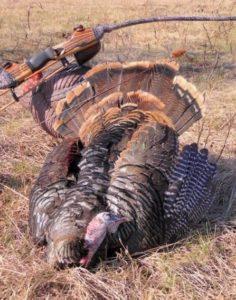

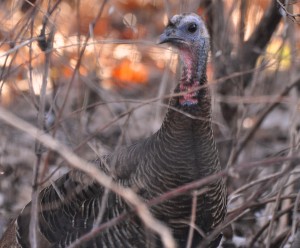
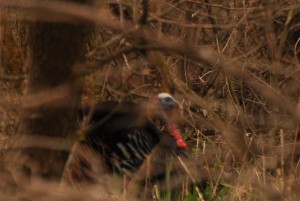
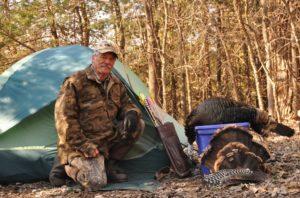
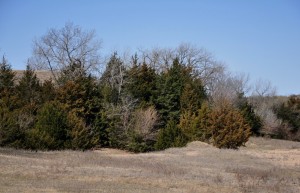
 Tom Cope
Tom Cope Sue Wilkinson
Sue Wilkinson Susan Judkins Josten
Susan Judkins Josten Rudi Roeslein
Rudi Roeslein Elyssa McFarland
Elyssa McFarland Mark Langgin
Mark Langgin Adam Janke
Adam Janke Joe Henry
Joe Henry Kristin Ashenbrenner
Kristin Ashenbrenner Joe Wilkinson
Joe Wilkinson Dr. Tammy Mildenstein
Dr. Tammy Mildenstein Sean McMahon
Sean McMahon